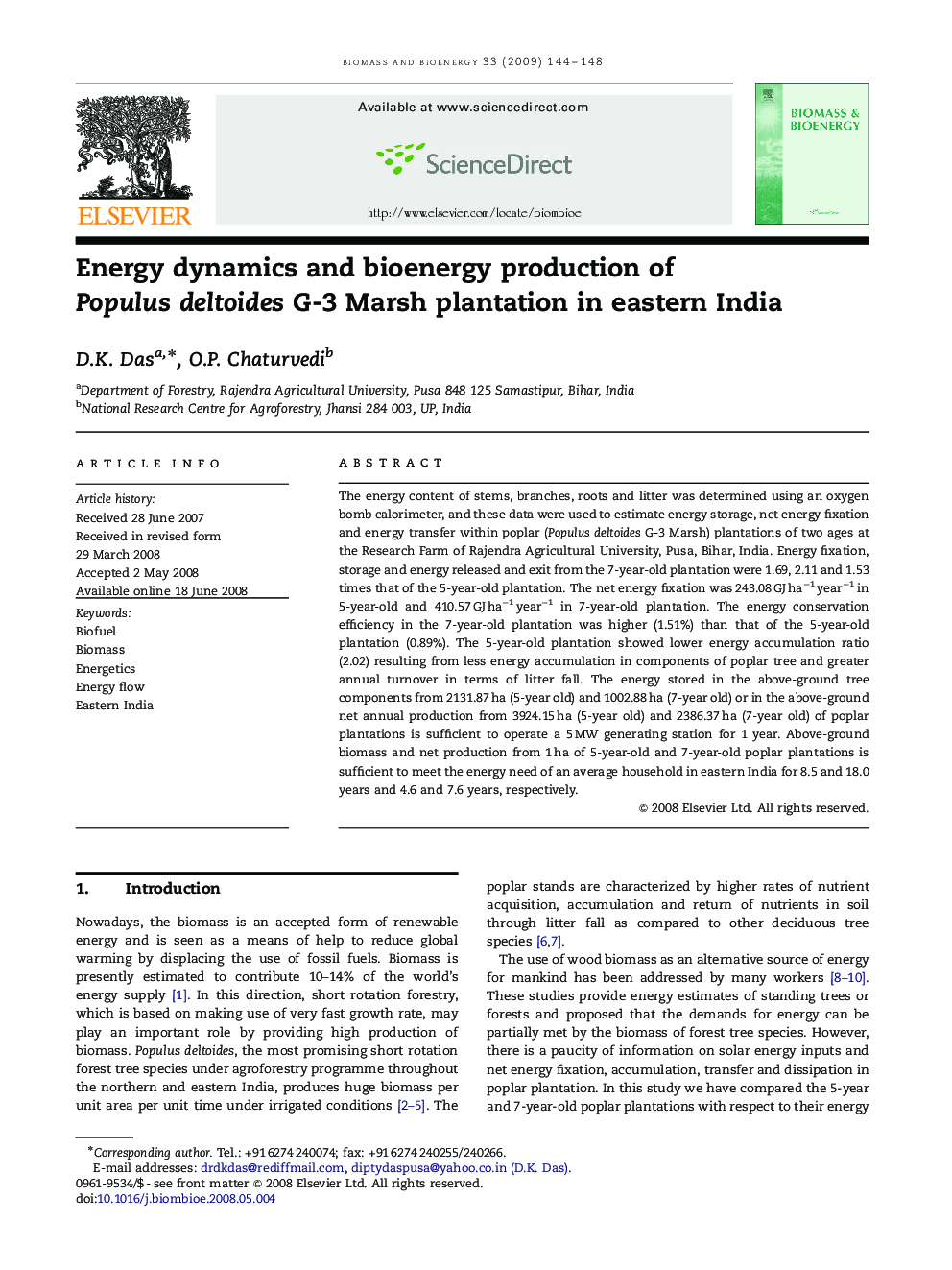| Article ID | Journal | Published Year | Pages | File Type |
|---|---|---|---|---|
| 678381 | Biomass and Bioenergy | 2009 | 5 Pages |
The energy content of stems, branches, roots and litter was determined using an oxygen bomb calorimeter, and these data were used to estimate energy storage, net energy fixation and energy transfer within poplar (Populus deltoides G-3 Marsh) plantations of two ages at the Research Farm of Rajendra Agricultural University, Pusa, Bihar, India. Energy fixation, storage and energy released and exit from the 7-year-old plantation were 1.69, 2.11 and 1.53 times that of the 5-year-old plantation. The net energy fixation was 243.08 GJ ha−1 year−1 in 5-year-old and 410.57 GJ ha−1 year−1 in 7-year-old plantation. The energy conservation efficiency in the 7-year-old plantation was higher (1.51%) than that of the 5-year-old plantation (0.89%). The 5-year-old plantation showed lower energy accumulation ratio (2.02) resulting from less energy accumulation in components of poplar tree and greater annual turnover in terms of litter fall. The energy stored in the above-ground tree components from 2131.87 ha (5-year old) and 1002.88 ha (7-year old) or in the above-ground net annual production from 3924.15 ha (5-year old) and 2386.37 ha (7-year old) of poplar plantations is sufficient to operate a 5 MW generating station for 1 year. Above-ground biomass and net production from 1 ha of 5-year-old and 7-year-old poplar plantations is sufficient to meet the energy need of an average household in eastern India for 8.5 and 18.0 years and 4.6 and 7.6 years, respectively.
